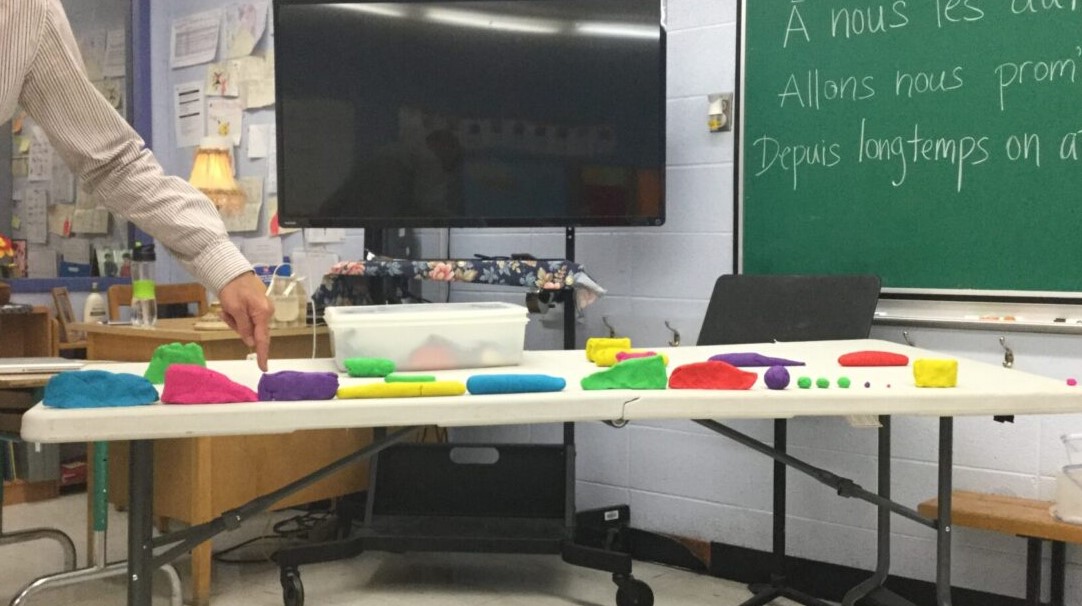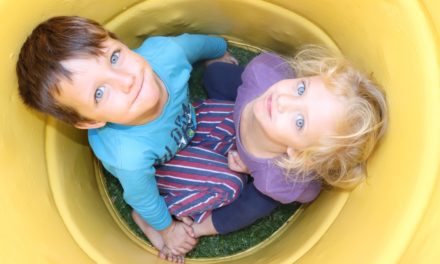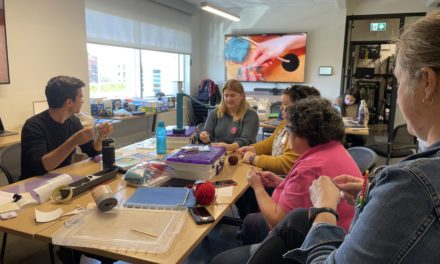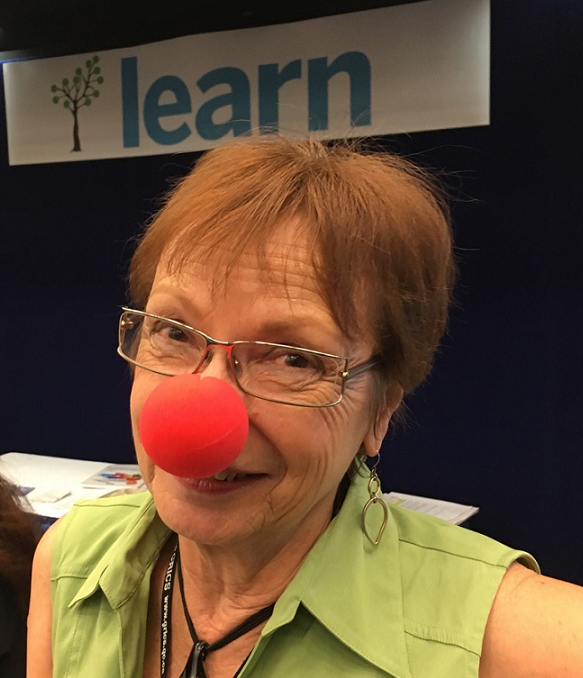Authored in collaboration with Dannielle Dyson, LEARN.
When I think of a music classroom, I imagine a bright-coloured room with neatly arranged shelves containing Orff instruments and band instrument cases, posters on the walls of music notation and famous composers, and the chatter of students excitedly streaming in the door, coming from their regular classrooms. The pandemic has changed the reality of the music classroom as many schools have opted for students to stay in the same room with specialists moving between classrooms. In 2021’s version of the troubadour, music teachers are traveling from classroom to classroom with a cart to transport instruments. This creates a dilemma as to how is it possible for each student to play an instrument if all the instruments cannot fit on a cart? What sanitary measures need to be taken between classes in order to ensure proper hygiene? Short of carting 25 wind instruments between classes and cleaning them between each use, music teachers continue to show great creativity in finding ways for their students to make music in these times. This post shows a few ways to create music with your students, with little to no gear or with materials readily accessible in the typical classroom.
So how do we go about making music with a minimum of gear?
Tuning in to sound
Music teachers work in the realm of sound – so, how about taking some time with our students to listen with intention?
Coronation Sound Bites was a school-wide project designed to bring awareness to noise levels in Coronation Elementary School’s cafeteria. As the collaborating artist, I worked with the school’s Science and Art teacher, Shelly Sharp, and the Music teacher, Connie Wilson. The first step in addressing noise levels was to take notice of what sounds were occurring in the space. We spent several months playing listening games to draw students’ attention to the sounds that surround them, waking up their sense of hearing, and sharpening their observation skills.
The following listening game requires no gear at all, taking up absolutely no space in your cart!
Sound Treasure Hunt (Pre-K to Gr.6)
- Listen for 2 minutes without speaking. Ask students to notice any sound they hear (e.g. birds, traffic, feet shuffling, their heartbeat, silence etc.).
- Then, for another 2 minute period, ask the students to write or draw the sounds they hear.
- Ask students to share their observations. Notice the similarities and differences in what individuals attend to.
- Repeat steps 1-3 on different days and at different times. Notice the similarities and differences between days and times.
Student observations can be quite unique depending on where they are sitting in a classroom and what draws their attention. An excellent side benefit of this game is that it can help to calm and ground students while laying the foundation for the following activities. For games that continue in this spirit and explore vibration as an auditory and physical sensation, see Daniel Oore’s Sound is Touch (All grades).
The body as an instrument
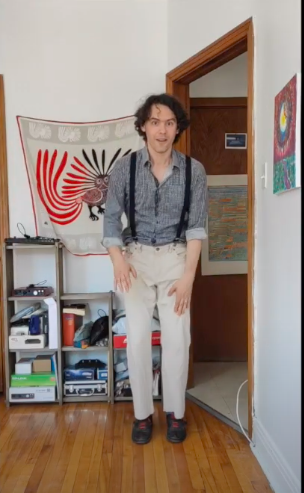 How else can we make music with no ‘musical instruments’?
How else can we make music with no ‘musical instruments’?
Geremia Lorenzo Lodi has a lot of experience adapting to little-to-no-gear situations after fine-tuning his time as a teacher in Quebec’s northern communities. His solution to this dilemma was to make music with his own body as a percussion instrument while singing with his voice.
To get you started here is just one of his musical games for creating Body Percussion Patterns (Gr. 3-6).
Using Geremia’s video as a step-by-step guide, I’ve used the following sequence to get students moving and to begin getting creative:
- Ask students to create 3 different sounds using their hands and/or feet and to create a rhythmic loop using these three sounds.
- Put students into groups of 4-5. Ask students to teach each other their loops.
- Ask the groups to choose one loop to rehearse to ‘performance’ level.
- As a full class, ask the groups to perform their loops for each other. Layer the ‘performance’ loops on top of each other for a stompin’ good time.
Speech also provides great potential for music-making through exploring rhythm and the sounds of language. Geremia’s all ages project Words & Rhythm leads students in freewriting exercises to generate text that is highly rhythmic. The theme of the words is up to you (hello cross-curricular competencies!), and can be set to any subject you need to address. Individual students generate text based on a theme and then choose one phrase to loop. Layer these phrases on top of each other by asking students to loop their phrase as a soloist or then with a buddy. Warning! Geremia’s rhythmic looping games create ear-worms that get stuck in your students’ heads (and yours). Choose your theme wisely, because the ear-worm will be running through your mind all day… and even in your dreams all night!
Found Objects
As you can see, you can make a whole lot of music with very few instruments. Now for some very space-saving materials to make music with – that you can fit in your cart as you travel from classroom to classroom. One of my favourite materials to use are ‘found objects’ – any objects that are close at hand in the classroom, from students’ desks to materials found in the recycle bin. Michel Frigon and Music teacher MariEve Lauzon’s used objects commonly found in classrooms to make music, including using playdough to create scores and classroom chairs as instruments. Matter at Your Fingertips features a video in which an elementary school class in Montréal-nord co-creates and performs with a score they made out of playdough (Pre-K-Gr. 6).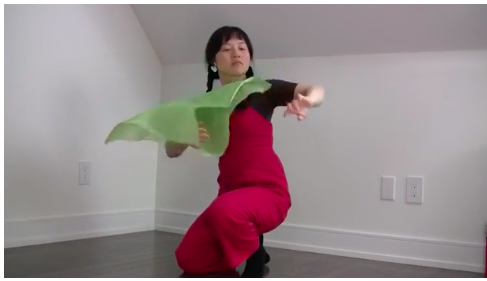
Requiring a bit more pre-planning (i.e. a trip to Dollarama, or your own kitchen cupboard), Germaine Liu uses found objects to play Task-Based Sound Games (Pre-K-Gr. 6, Special Ed) that challenge students to think about what music is and can be. Germaine’s games use objects such as tissue paper, marbles and bowls are great fun, especially for active kids who need a physical challenge after sitting at the same desk for a long time.
–Take Flight, using tissue paper
–Path, using kitchen containers, string and mason jar lids
–Swirl, using salad bowls and marbles
In the Found Objects Orchestra & Conduction Activity, Meredith Bates takes use of found objects a step further by building instruments out of recycled materials, with possible links to the elementary school curriculum in exploring material properties.
In addition to satisfying elementary school students’ love of making things, students can then form a Found Object Orchestra. One student at a time acts as a conductor (in this video example, a very enthusiastic 7-year-old!) who then creates their personal world premiere much like the Stay at Home Symphony. If you want to try out the troubadour theme with your students, ask them to create a world premiere around a trip they would like to take to a place of their choosing (e.g. the ocean, forest, big city etc.) and enjoy how many different soundscapes can be created with the same instruments.
Parting thoughts on today’s troubadours
These games and listening responses get to the heart of why we make music. That part of the troubadours’ craft remains the same – just as troubadours centuries ago sang of love, life, tragedy and good times, today’s troubadours trundling from classroom to classroom can still use music as a way to understand ourselves and others, feel and express emotions and share experiences with others. Twenty-First century troubadours certainly have challenges – but it’s not the first time music teachers have been creative in how to teach music!
Resources
All the projects in this post are featured in the Participatory Creative Music Hub, a free, open-source resource that celebrates creativity in music and sound. The purpose of the Hub is to share resources, build connectivity between practitioners, participants, and music-making newcomers who are all from a variety of backgrounds and fields. Education projects are a major part of the Hub with projects from Pre-K through to Secondary V.
Teachers are invited to draw inspiration from these projects and implement them in their own classrooms. Please acknowledge Teaching Artists by name when using these activities. Teaching Artists’ contact information is available on each project page; please contact them directly for more information or to bring them into your classroom. Please note that while the Hub cannot provide funding for these activities, many schools and Teaching Artists are affiliated with programs that do provide funding for these types of activities.

